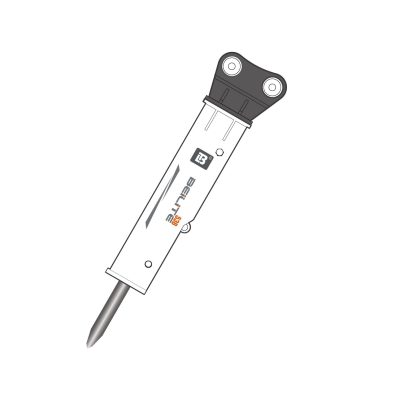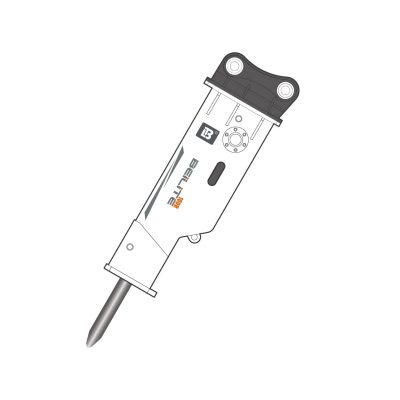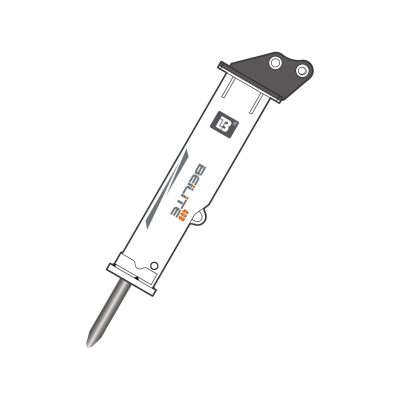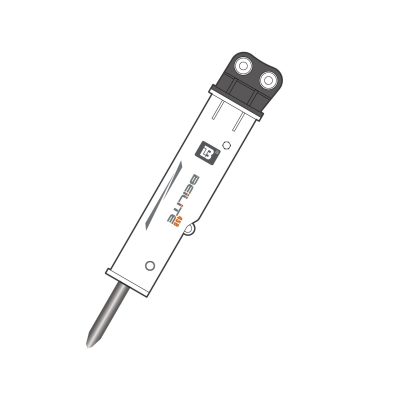How to Choose the Right hydraulic breaker for Your Working Conditions? A Procurement Guide for Construction Companies
Every construction manager faces the decision of which hydraulic breaker to buy. You aim to find a tool that matches your site demands and delivers reliable performance. This guide outlines steps that contractors follow to select the right breaker hammer for varied conditions.
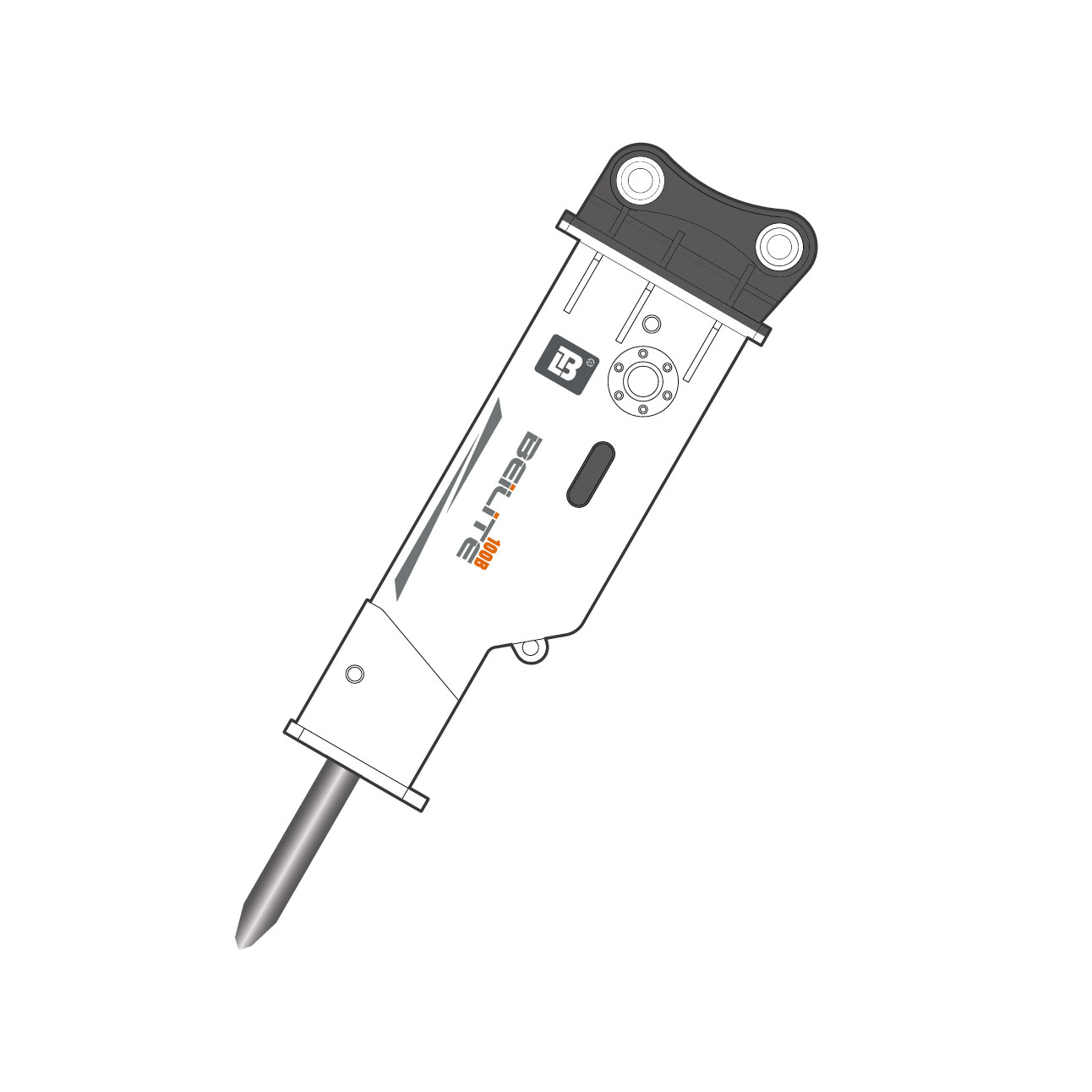
Understanding the Role of a hydraulic breaker in Construction
Contractors use a hydraulic breaker to demolish concrete, rock, and asphalt. The tool transfers hydraulic energy from an excavator into powerful blows. You rely on the rock breaker to break hard material without excessive downtime. Proper selection ensures you meet project timelines. Each paragraph here highlights how a hydraulic breaker optimizes site productivity.
Assessing Your Site’s Working Conditions for the breaker hammer
You must evaluate ground hardness, material type, and working depth. You inspect whether rock or reinforced concrete requires higher impact energy. You note ambient temperatures and dust levels that may affect seal life on the breaker hammer. You check whether confined space limits tool size. You record vibration limits to protect operators and nearby structures. You incorporate these factors to refine your choice of hydraulic breaker.
Evaluating Key hydraulic breaker Specifications
You compare models by two core metrics: impact energy and frequency. You list models side by side to spot variations.
- Impact Energy and Frequency
You measure impact energy in joules or foot-pounds. Higher numbers deliver faster break rates on tough material. You check frequency (blows per minute) to see how quickly the rock breaker works. You balance energy per blow against frequency to avoid overloading your hydraulic system. - Operating Pressure and Flow Rate
You match operating pressure (in bar or psi) and flow rate (liters/min or gpm) to your excavator’s hydraulic output. You avoid models that exceed your machine’s capacity. You verify that the hydraulic breaker fits within safe operating limits. You ensure peak performance without risking pump damage.
In every comparison, you keep the focus on the primary hydraulic breaker keyword to maintain SEO strength.
Matching Your Excavator to the excavator-mounted breaker
You verify the carrier weight class. Light carriers fit small excavator-mounted breaker models. Heavy excavators handle large breakers with higher impact energy. You inspect hydraulic lines and couplings for compatibility. You confirm that the bracket type matches your excavator’s quick‐coupler or pinned linkage. You ask your dealer about adapter kits if needed. You record all findings in a spec sheet for each breaker hammer option.
Considering Wear Parts and hydraulic breaker maintenance tips
You plan for regular tool bushing and chisel replacement. You lubricate the tool daily to prevent seal failure. You track maintenance intervals in a service log. You stock key parts like nitrogen accumulator kits and impact pistons. You follow the manufacturer’s grease recommendations to extend the hydraulic breaker life. You train operators to inspect for cracks and loose bolts before each shift.
Comparing Brands and After-Sales Support for the rock breaker
You list top suppliers and check factory certification. You call local dealers to confirm part availability. You evaluate warranty periods and coverage terms. You read customer reviews for responsiveness on repairs. You ask peers about service quality. You choose a brand whose after-sales support matches your project scale for the rock breaker.
Budget Planning and Total Cost of Ownership
You calculate initial purchase price. You add shipping, training, and installation fees. You estimate annual maintenance costs based on part wear and hydraulic fluid changes. You forecast downtime losses if a repair takes multiple days. You include resale value to gauge long-term cost. You compare models within your budget range. You choose a model that meets performance needs and keeps operating costs in check.
Final Steps to Complete Your hydraulic breaker purchase guide
You perform a final on-site demo before ordering. You verify actual performance on your hardest material. You confirm your operator comfort with vibration levels and noise output. You review the contract terms, including delivery and payment schedule. You send a purchase order to the selected dealer. You plan for tool mounting and operator training on delivery day.
Key Takeaways
- You assess site conditions to match hydraulic breaker features.
- You compare impact energy, frequency, pressure, and flow with your carrier.
- You plan maintenance around wear parts and lubrication.
- You weigh brand support and warranty terms for the breaker hammer.
- You calculate total cost over the tool’s lifespan.
Call to Action
Contact our sales team today to schedule a free on-site demo of the latest hydraulic breaker models. We help construction companies choose the right rock breaker and ensure fast delivery and full training for your crew. Reach out now to get personalized procurement support.
Frequently Asked Questions
1. What impact energy do I need for urban demolition?
You select a breaker hammer with lower impact energy but higher frequency. You reduce vibration and noise near sensitive structures. You ensure safe working conditions in tight spaces with the right hydraulic breaker.
2. How often should I change wear parts on my hydraulic breaker?
You replace the bushing and chisel based on hours of operation and material hardness. You typically inspect parts every 50–100 hours under heavy use. You follow the manufacturer’s hydraulic breaker maintenance tips to avoid unexpected failures.
3. Can I mount the breaker hammer on different excavators?
You can swap an excavator-mounted breaker if you use a universal bracket or adapter. You confirm weight class compatibility and hydraulic flow requirements. You train your crew on proper mounting procedures to ensure safe operation.
4. How do I calculate the total cost of owning a rock breaker?
You sum purchase price, shipping, installation, and training fees. You add annual maintenance parts, hydraulic fluid, and expected downtime costs. You factor in resale value to get a clear picture for your hydraulic breaker purchase guide.
This guide provides clear steps and actionable tips for your next hydraulic breaker procurement. Follow each section to secure the right tool for your project demands—and boost your site productivity.


